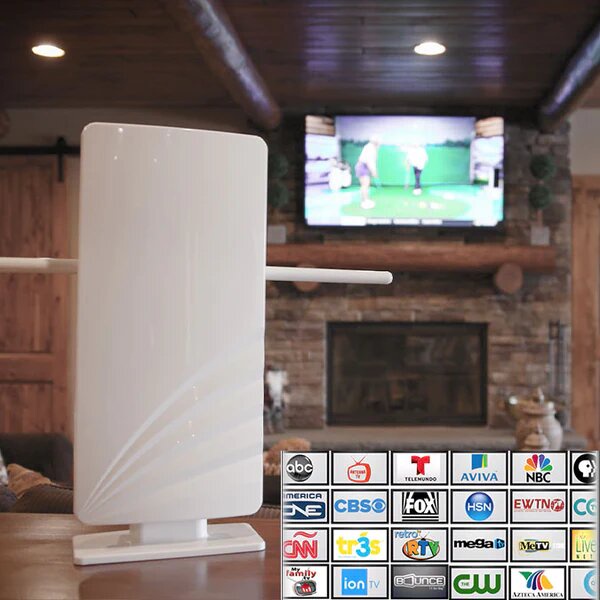In today's digital age, indoor HDTV antennas are becoming increasingly popular as a cost-effective and convenient solution for accessing free television channels. These compact devices offer viewers the ability to enjoy high-definition programming without the need for expensive cable or satellite subscriptions. In this article, we'll delve into the world of indoor HDTV antennas, exploring their benefits and how they enhance the television viewing experience.
**The Rise of Indoor HDTV Antennas**
Indoor HDTV antennas have experienced a surge in popularity for several reasons:
1. **Affordability**: Indoor antennas provide access to free over-the-air channels, eliminating the need for monthly subscription fees. This makes them a cost-effective alternative to traditional cable or satellite television services.
2. **Ease of Installation**: Setting up an indoor HDTV antenna is quick and straightforward. With no need for complex wiring or external mounting, users can easily install the antenna themselves and start enjoying free television channels in a matter of minutes.
3. **Compact Design**: Indoor antennas are typically small and unobtrusive, making them suitable for apartments, condominiums, and other living spaces where space is limited. Their compact design allows them to be discreetly placed near the television without cluttering the room.
4. **High Definition Programming**: Many local broadcasters transmit their signals in high definition, allowing viewers to enjoy crystal-clear picture quality without the compression artifacts often associated with streaming services.
**How Indoor HDTV Antennas Work**
Indoor HDTV antennas capture over-the-air signals transmitted by local television stations. These signals, which carry audio and video information, are captured by the antenna's elements and converted into electrical signals. The antenna then amplifies these signals and sends them through a coaxial cable to the television, where they are decoded and displayed on the screen. By adjusting the antenna's position and orientation, viewers can optimize signal reception and minimize interference for the best possible picture quality.
**Choosing the Right Indoor HDTV Antenna**
When selecting an indoor HDTV antenna, it's essential to consider factors such as:
- **Range**: Determine the distance to the nearest broadcast towers and select an antenna with sufficient range to capture signals reliably.
- **Type**: Indoor HDTV antennas come in various designs, including flat, amplified, and multidirectional models. Choose the type that best suits your location and viewing preferences.
- **Placement**: Experiment with different locations and orientations to find the optimal placement for your antenna, typically near a window or outer wall facing the direction of the broadcast towers.
- **Amplification**: Consider whether an amplified antenna is necessary to boost weak signals or if a passive antenna will suffice for your location.
**Conclusion**
Indoor HDTV antennas offer a convenient and cost-effective way to access free television channels in high definition. With their compact design, ease of installation, and reliable performance, these antennas provide viewers with a viable alternative to traditional cable and satellite subscriptions. By understanding how indoor HDTV antennas work and considering factors such as range, type, placement, and amplification, viewers can enjoy a wide range of local programming without breaking the bank. Whether you're looking to cut the cord or supplement your existing entertainment options, an indoor HDTV antenna can be your gateway to free, high-definition television content.


No comments yet